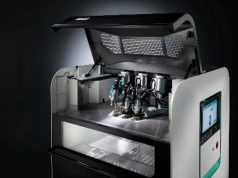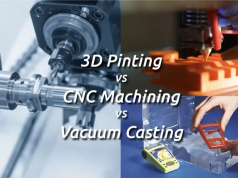PEUGEOT is reinventing car accessories thanks to innovative 3D printing technology and a brand new flexible polymer. Available on the PEUGEOT LIFESTYLE shop, a range of accessories including a sunglasses holder, a can holder and a phone/cardholder has been created specifically for the new PEUGEOT 308. This is the first time that 3D printing technology has been used on car accessories, an innovation that looks very promising for the entire automotive industry.
These accessories are the result of a joint effort by PEUGEOT’s Design, Product and Research & Development teams in collaboration with HP Inc., Mäder and ERPRO. They are 3D printed using the new HP Multi Jet Fusion (MJF) 3D printing technology. The aim is to offer innovative products that are pleasant to the touch, light, solid and easy to use, and which enhance the interior well-being offered by the 308 and its new PEUGEOT i-Cockpit.
A SHIFT TO INDUSTRIAL INNOVATION
The designers’ objective at the start of the project was to make accessories more visible and attractive by innovating and using modern materials.
The range of accessories was drawn up after a detailed analysis of how customers use storage in the car. As traditional materials did not meet the specifications, the PEUGEOT Design “Colours and Materials” team worked with its partners to develop a material with a more innovative look. 3D printing was the obvious solution.
Flexible and environmentally-friendly – the technology of the future.
3D printing is one of the fundamental pillars of the fourth industrial revolution. With this new technology, it is possible to increase flexibility, adapting to the needs of an increasingly demanding and unpredictable market. All kinds of customised objects and accessories can be produced without needing expensive moulds and manufacturing tools.
3D printing is also better for the environment, a very important feature in our quest for sustainable manufacturing processes that save resources and waste. Its use is becoming more and more widespread and is revolutionising the manufacturing system across many industries. Indeed, additive manufacturing is becoming an alternative to manufacturing techniques such as injection moulding.
Why did Peugeot make this choice?
3D printing offers many additional advantages:
- Design freedom: fewer manufacturing constraints and infinite possibilities for part complexity (due to there being no injection moulding). 3D printing opens up new creative spaces for designers.
- Optimised structures: reduced weight, greater strength, fewer assemblies, flexibility through by using mesh.
- Agile production: infinite customisation possibilities, mass production with shorter lead times, and no need for storage thanks to “on demand” production.
In addition, this technology is constantly evolving, both in terms of the materials it uses and the production methods. And the production costs just keep going down.
A most innovative material.
In just a few months, the teams have jointly developed a new polymer that has 3 main advantages:
- Flexibility: a flexible, malleable and robust polymer,
- Speed: the manufacturing process is very short and made to measure,
- The quality of the rendering: highly accurate details thanks to very fine molecules.
The flexible material used is Ultrasint thermoplastic polyurethane (TPU), the fruit of a partnership between HP Inc. and BASF. This material offers durable, strong and flexible parts. It is a perfect material for impact absorbing parts that require high elasticity and for flexible mesh-like structures. The material can be used to produce parts with a high surface quality and a very high level of detail.
The use of TPU in a car interior is a new approach, which has been patented by the STELLANTIS Group.
THE SECRETS TO REVOLUTIONARY MANUFACTURING
PEUGEOT has chosen to use HP Multi Jet Fusion (MJF) 3D printing technology. HP Multi Jet Fusion is a brand new layer-by-layer additive manufacturing technology on a powder bed. PEUGEOT was one of the first to use this technology in the development of the 3D accessories range.
3D PRINTING HAS A FUTURE AT PEUGEOT
3D printing is still in its infancy in the automotive industry. This technology is intended to be developed in series, not only on the range of accessories but also on more technical parts of the next PEUGEOT models. The advantages of this technology offer infinite possibilities.
(c) Picture & Link: Peugeot
Subscribe to our Newsletter
3DPResso is a weekly newsletter that links to the most exciting global stories from the 3D printing and additive manufacturing industry.























